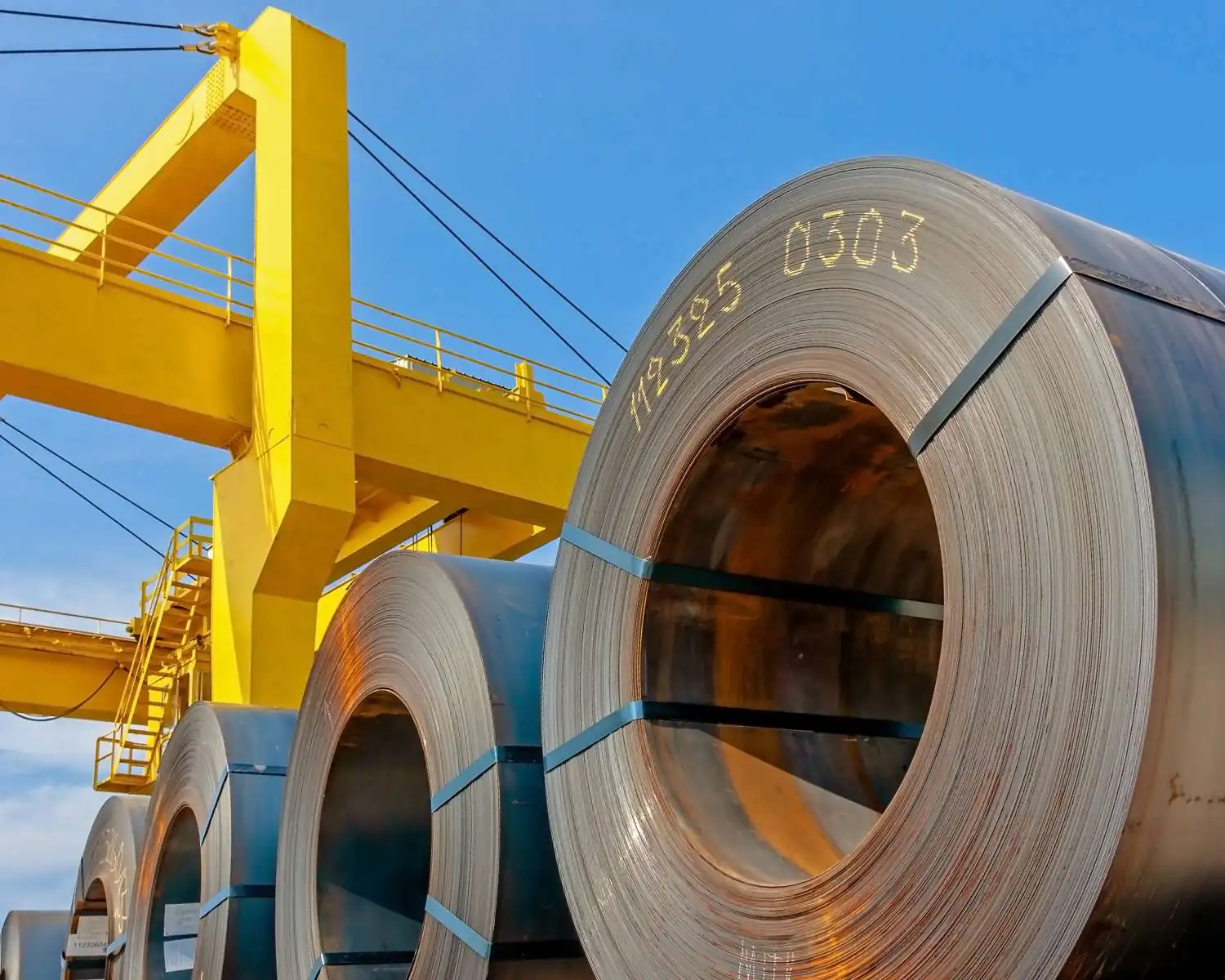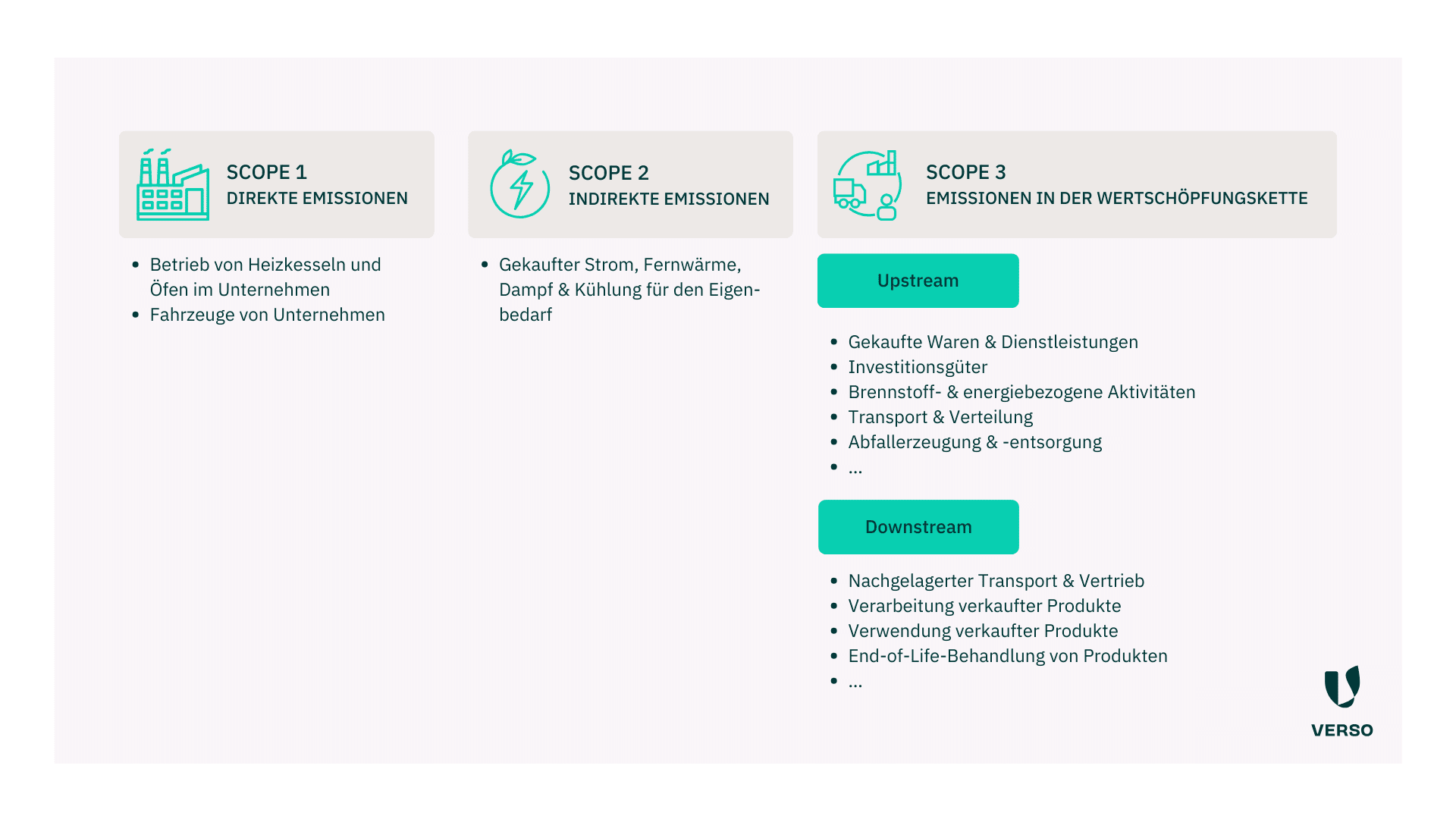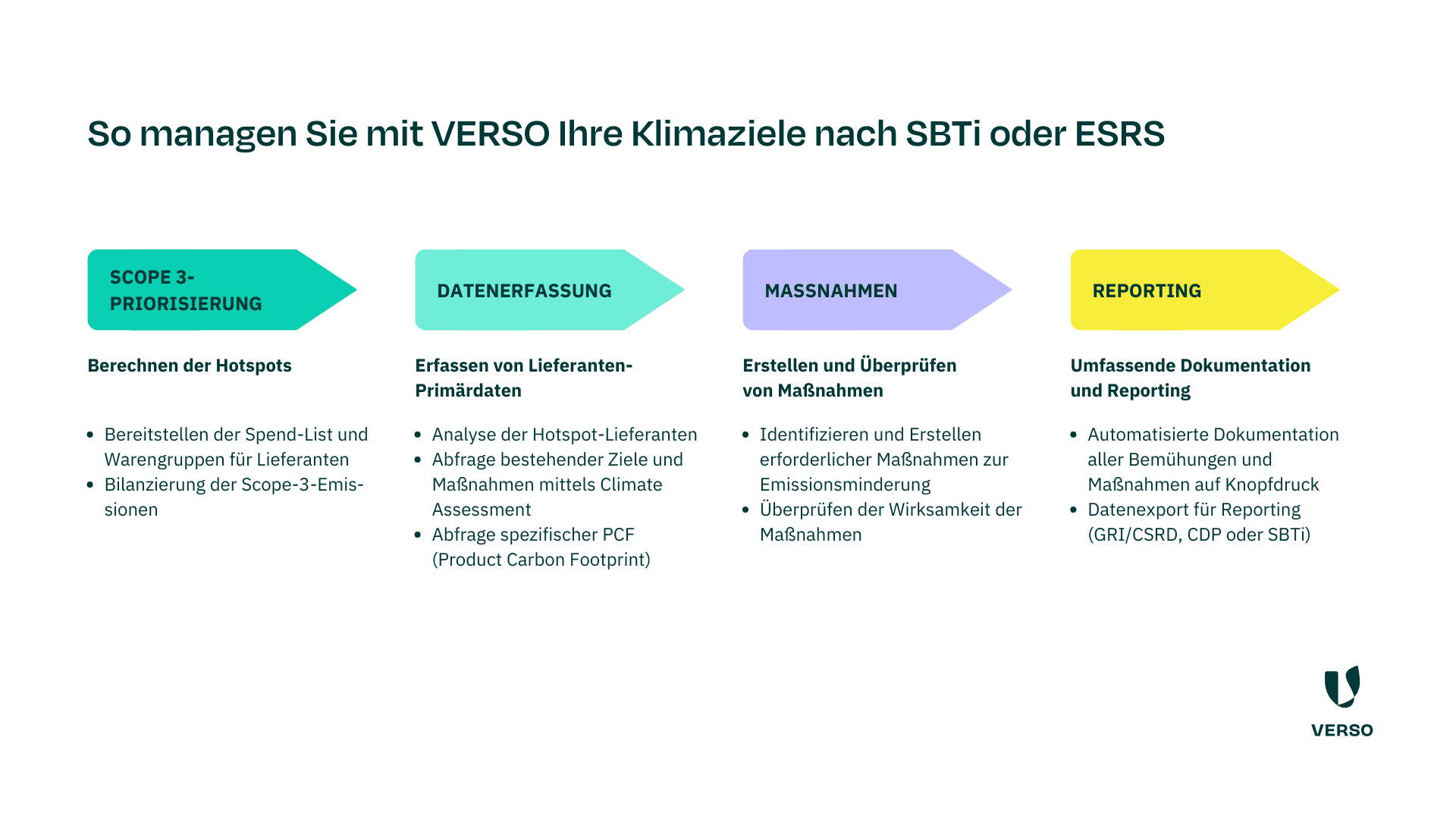
Decarbonizing the supply chain: How companies achieve their climate targets along the supply chain
Around 80% of total emissions are generated along the supply chain – the path to Net Zero therefore also requires clear climate targets for the supply chain. But targets alone are not everything. Read here to find out how to implement them.
In recent years, numerous companies have clearly felt that their supply chains are susceptible to crises.
As a result, more and more companies have committed themselves to a sustainable transformation of their business model.
The push for sustainable business practices also soon came “from the very top”: with the European Green Deal, the EU has set the ambitious target of climate neutrality by 2050.
Transparency beyond one’s own nose
One of the pillars of the Green Deal is the CSRD, which obliges companies to report on sustainability.
This means that companies must disclose detailed data on the status quo, their goals and their sustainability measures.
With the ESRS, a set of rules has been introduced specifically to request this data.
However, seamless sustainability reports require one thing above all: 100% transparency.
And far beyond the boundaries of the company itself.
The LkSG, EUDR and CBAM alone demand supply chain transparency from companies.
In addition, the ESRS E1 standard (“Climate Protection and Climate Change”) in particular requires clear targets and strategic planning for all emissions associated with your company – right through to Scope 3.
With an average of 80% of total emissions, the majority of a company’s emissions are generated along the supply chain.
Scope 3 emissions have the greatest impact on the carbon footprint.
Your company therefore needs clear answers on the status of emissions along the supply chain – and how you can decarbonize your supply chain in a targeted manner.
Do your suppliers keep an eye on their emissions, or do they not care?
Can they provide you with data on this?
And if not, do they at least intend to provide the necessary data in the future?
Can you persuade them to work with your company to drive sustainability forward?
Questions upon questions.
Let’s take a look at how you can get answers.
4 steps to decarbonize your supply chain
Step 1: Estimate Scope 3 emissions
Get an overview of your suppliers and compile a list of expenditure and product groups.
You can use this to estimate supplier emissions.
If you lack precise data, you can initially fall back on average data for the sector.
Make the distribution more precise as soon as you have primary data from the suppliers.
Step 2: Identify Scope 3 hotspots and assess suppliers’ climate maturity
Then categorize your suppliers according to their level of climate maturity.
Supply chain tools such as the VERSO Supply Chain Hub make this possible via direct inquiries.
- No maturity level available: Decarbonization strategy or measures are completely lacking.
- Low level of maturity: Initial steps have been taken to reduce CO2, but no systematic approach yet.
- Advanced maturity level: Concrete reduction measures are being implemented, but are not yet anchored in the business processes.
- High degree of maturity: The supplier systematically implements decarbonization, reduction measures are firmly integrated into the corporate strategy.
- Very high level of maturity: Sustainability has long been on the agenda.
With innovative approaches and high standards, the supplier is leading the way as a prime example.
Indicators for this are, for example
The origin of raw materials, energy and resource efficiency, the use of renewable energies in production and transportation or verified (!) CO2 compensation projects.
Another plus point would be, for example
the voluntary provision of a sustainability report.
You now know how high the emissions load per supplier/product is and how seriously your suppliers are already taking the issue of sustainability.
This gives you an overview of which suppliers need special attention and support when you later implement the strategy to achieve your decarbonization goals.
Step 3: Set climate targets, onboard suppliers
Set clear, science-based climate targets for your supply chain that are in line with the results of climate research and support the Paris Climate Agreement (limiting global warming to 1.5 °C).
You can find industry-specific assistance from the Science Based Targets Initiative (SBTi), for example.
The next step is the actual decarbonization of the supply chain.
The SBTi recommends the following approach:
- Communication
- Cooperation
- Support
- Monitoring
- Reinforcement
Inform your suppliers about your climate targets for the supply chain and motivate them to cooperate.
Our tip: Increase the chance of good cooperation by involving your suppliers in the target setting from the outset. Net Zero is teamwork!
Step 4: Implement climate strategy
In the long term, you will only achieve your climate targets in the supply chain if you remain in close contact and support your suppliers in implementing the targets.
This could look like this, for example:
- Enforce specific measures – Walmart has supported its suppliers in switching to renewable energy, for example, which helped the Group achieve its supply chain emissions targets 6 years ahead of schedule.
- Support with knowledge or resources – for example, you can increase
Increase your suppliers’ sustainability expertise and therefore their level of climate maturity through training. - Stimulate competition among suppliers – by 2024, 92% of companies will require ESG data from their suppliers, according to a BDC study; over the next 5 years, they will also increase the number of criteria on which suppliers must report.
Also help your suppliers to optimize processes or even break completely new ground.
Continuously monitor progress and make climate targets a fixed item on the agenda of your supplier meetings.
After all, genuine sustainability requires transparency and honesty.
But it also needs consistency.
So make sure your suppliers understand this: Anyone who doesn’t participate will be kicked out sooner or later.
Suppliers with a low level of maturity in particular will not be able to make the switch overnight.
Nevertheless, they should show a long-term willingness to make production and transportation sustainable.
After all, this will not only help the climate – but also the company’s own resilience.
How can I achieve the climate targets for my supply chain as easily as possible?
The more complex your supply chain is, the more difficult it is to collect all the necessary data, determine the status quo and monitor progress.
In discussions with our supply chain consultants, it becomes clear time and again that a lack of resources and incomplete data floating around make life difficult for procurement.
So how do you achieve your climate targets in the supply chain as simply and automatically as possible? With the right tools! The combination of VERSO Climate Hub and VERSO Supply Chain Hub helps you to strategically manage your climate targets according to SBTi or ESRS:
- The VERSO Climate Hub simplifies the calculation of your carbon footprint, taking into account the individual scopes.
- With the VERSO Supply Chain Hub, you can automatically query the climate protection maturity level of your suppliers and obtain specific carbon footprints.
These in turn help you to refine your climate strategy in the Climate Hub and make savings transparent. - You can then use the reporting function to create qualified reports in accordance with GRI/CSRD for the CDP or SBTi in no time at all.
* This information is summarized editorial content and should not be construed as legal advice. VERSO accepts no liability.
This might also interest you:
Subscribe to our newsletter!
Sign up and receive regular news about:
- Pragmatic all-in-one solution for ESG reporting, climate and supply chain management
- Individual advice from the VERSO experts
- Developed with expertise from 12+ years of sustainability management
- Trusted by 250+ customers



